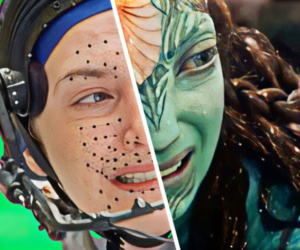At the time of writing, Batman has been around for 81 years, with the superhero’s first appearance coming back in 1939. Over the years, perhaps unsurprisingly, the character has undergone a number of changes both mentally and physically. Within the entertainment industry, character development has long been significant, with Bruce Wayne’s alter ego being a primary example of long-standing characters needing to evolve to adapt to social changes. So, let’s take a look at how Batman as a character and his relationships have developed.
Character Growth
From a visual standpoint, much has changed in relation to Batman’s appearance since the superhero’s very first inclusion in DC comics. In the character’s earliest years, the justice-fighting saviour of Gotham typically wore red and was drawn without his famous mask. Since then his appearance has changed drastically as he now wears a dark-plated Batsuit, with some believing that this shift to darker colours is a reflection of the troubles that society has faced since the 1930s. Although this is just a theory, the changes to Batman’s style are evident throughout the many releases in the franchise as, after the Batman/Superman Hour appearance of 1968, colours such as light blue were replaced with black and grey.
Generally, one of the main reasons why superheroes are held in such high regard by film fans is because they offer an escape from the realities of life, with Batman’s supernatural appearance being symbolic of this. However, recent film releases centred around Gotham’s much-loved city protector show a different side to his character. During the Christopher Nolan era, the caped crusader showcased far more on an emotional level than ever before as he battled against his own demons and internal struggles, something that, in years gone by, had never really been associated with the crime-fighting hero.
Ever-Changing Relationships
While the argument can be made that social changes outside of the Batman franchise have altered the on-screen nature of Batman, this too can be said for the villains. Unlike many superheroes, Bruce Wayne’s alter ego doesn’t seek personal revenge fuelled by the need for acceptance and gratification among Gotham’s residents. Despite aspiring to ensure justice, Batman: The Animated Series, which was first aired in 1992, showcases the hero’s ability to sympathise with even the most troublesome of characters, as he offers support to Harley Quinn in Joker’s Favour after saving her life. However, in the recent Arkham video game series, Gotham’s hero is far colder with the Joker’s obsessed lover as he strives to keep the city safe from the infamous Joker.
There can be no doubt that the most intriguing relationship throughout the entirety of the Batman franchise concerns the caped crusader and his arch-nemesis, the Joker, with a sense of flawed morality seemingly binding the two. While Gotham’s iconic characters are continually battling for superiority, there’s a growing sense that they both need each other, as illustrated in The Dark Knight, when Heath Ledger’s Joker says that Batman “completes” him. Since the franchise’s early days, Joker has developed into far more than just another villain, as, in broader pop culture, he and Batman come as a pair, as highlighted through various mediums including Batman and The Joker Jewels, which is one of many video slots listed at VegasSlotsOnline. Despite being nostalgic in sound and visuals by focusing on Batman in the 1960s, the modern-day five-reel slot has a contemporary feel, with Gotham’s hero once again chasing down his arch-nemesis.
Time Has Given Batman More Depth
Ultimately, as primarily showcased through Batman’s constantly-altering appearance, time has been pivotal to the caped crusader’s character growth. Although the objective of Gotham’s hero remains the same, his constant struggle against pending anarchy has undeniably impacted his humility and morality. While it remains to be seen how the character will continue to evolve in the coming years, it appears likely that his persona will continue to reflect off-screen society.
















